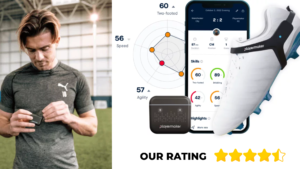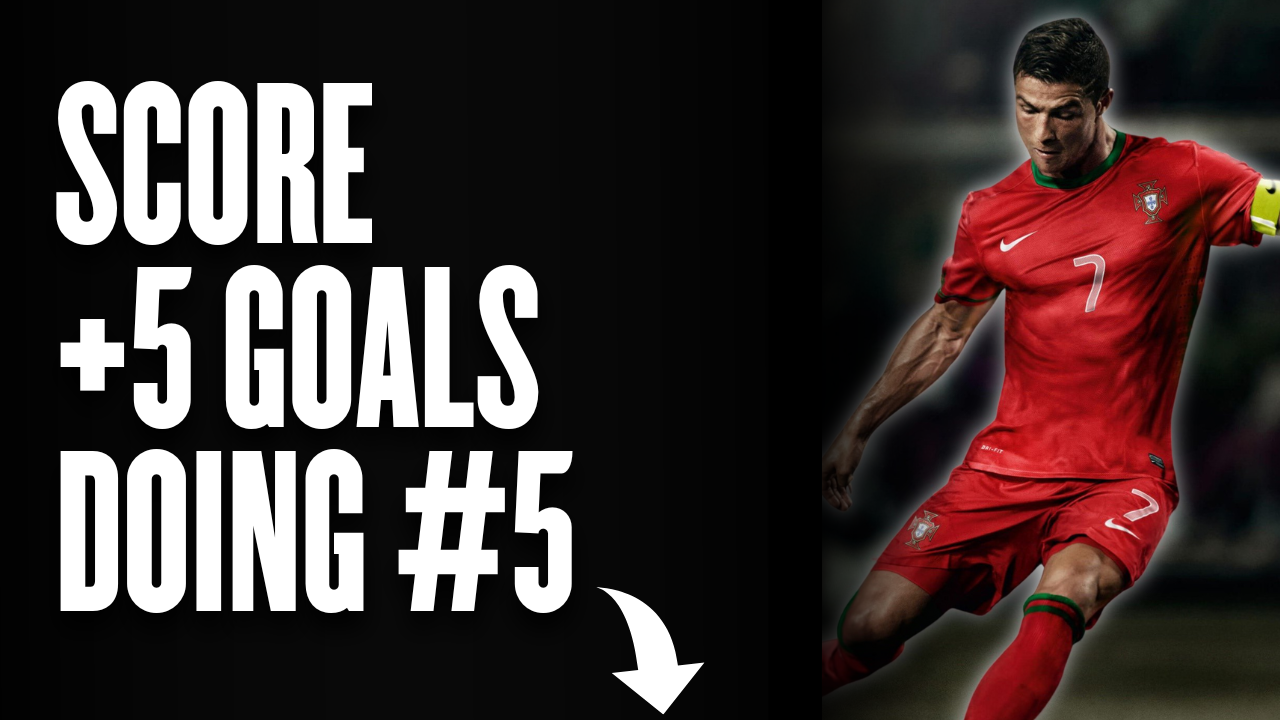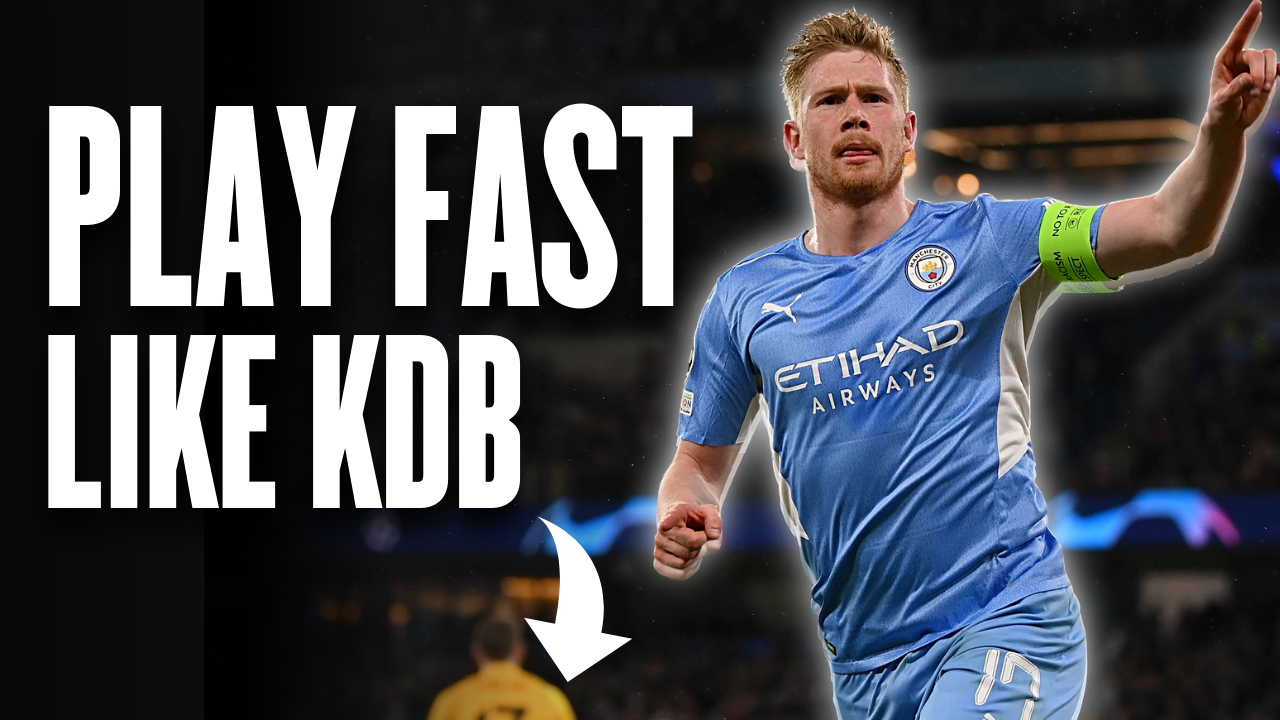
Is your strength training making you a better bodybuilder and *not* a better football/soccer player?
Are you tired of being thrown around each time you get into a physical battle, either at training or games?
We all know that this is making you look weak. It is ultimately limiting you from delivering actual results for your team.
So instead of ditching the gym because your old school coach told you that weights make you slow and aren’t for athletes or you’re going there to lift like a bodybuilder, just start training smarter.
If you’re reading this, you’re probably in the right place.
WHAT IS STRENGTH & WHY DO YOU NEED IT IN FOOTBALL?
So what is strength & why the heck do you need it in football/soccer?
Strength in general (not just football) is the force your neuromuscular system exerts to overcome resistance. That resistance can be a barbell or an opponent in a 1v1 scenario, and is equal to mass times acceleration.
F = ma (Force = mass x acceleration)
WHAT IS MAX STRENGTH?
There are many types of strength. Max strength, general strength, reactive strength & strength endurance.
For this article, we are gonna focus on max strength development.
Max Strength, basically is the most amount of force your neuromuscular system can exert to overcome resistance during a single, voluntary muscle contraction.
So, do you really need strength as a football/soccer player?
The short answer is yes, you absolutely need it.

*As an affiliate, I'm earning from qualifying purchases without any extra charges being placed on you.
Especially if you have a low training age.
The less trained you are the broader the range of adaptations that can happen and the higher the potential for improvements.
So by training for max strength, you can achieve great improvements in your power and speed as well, just because of the increased force outputs.
You’re basically killing two or even more birds with one stone. Something that higher-level athletes can’t do (that’s why they need more specific training stimuli).
These adaptations in strength, speed, and power have a direct transfer to the playing field.
- Higher success rate in physical battles
- Increased force outputs in technical actions such as shooting, passing, and crossing the ball
- Increased confidence
“In other words, you’ll be able to beat more players, kick the ball “harder”, and feel more confident.”
However, the most important benefit of them all is injury resilience.
By increasing your strength you’re drastically lowering the chances of getting injured.
Because as we said, strength is your ability to exert force in order to *overcome* a resisting force or object, whether that is internal or external resistance.
Having the strength to overcome an external or internal force will lead to fewer contact and non-contact injuries.
So if you wanna stay available for selection year-round, don’t neglect your strength training; it can quite literally be a career-saver for you.
HOW TO MEASURE STRENGTH IN FOOTBALL (+ NORMS)
Having said that, how do we measure strength?

*As an affiliate, I'm earning from qualifying purchases without any extra charges being placed on you.
How much strength is appropriate and is there such a thing as too much strength?
First of all, the most usual, cost-effective, and straightforward way to measure muscular strength is by testing your 1-Rep-Max scores in various lifts, especially compound ones (Back Squat, Deadlift, Bench Press, etc.).
For more accuracy and detail in your data there are other testing tools you can use such as Isokinetic Testing Machines and force plates, but let’s stick with the basics everyone can use; the 1RM testing procedure.
Your 1RM basically is the most amount of weight you can lift in a single, voluntary muscle contraction in any given exercise.
Now, the weight you can lift tells us many things about the force you can produce. However, in order to see how strong you really are we have to look deeper. And that is where your relative strength comes into play (your strength to bodyweight ratio).
For example, we have two individuals that can lift the same amount of weight in the back squat. One individual weighs 85kg while the other one weighs 75kg.
As you can understand, the heavier individual has a smaller relative strength compared to the lighter one, meaning that the lighter individual produces higher force outputs.
CALCULATING YOUR RELATIVE STRENGTH
All you gotta do to determine your relative strength is this; get your 1RM score and divide it by your body weight. (i.e. 1RM = 150Kg & BW = 75Kg then Strength:Bodyweight = 2)
The number you get is your strength to bodyweight ratio for that specific exercise.
Usually, males that are able to lift anywhere between 1.5 to 2 times their body weight have hit a great baseline level of strength if they’re trying to reach the elite level. These norms, however, are a bit smaller for women.
Let’s not go super deep into this though.
NOT IN THE MOOD TO READ? HERE’S THE VIDEO!
HOW TO DEVELOP STRENGTH FOR FOOTBALL
So, how do you develop strength?
There are various ways you can achieve this. To be honest, though, the fastest and most effective one seems to be lifting near or at your 1RM scores frequently during a training week.
Since you’re trying to push the ceiling of your strength, then following the max strength training principles you’re seeing below is probably the best option.
However, max strength training can’t be used year-round with football players because it is a highly demanding training stimulus. This is especially the case for injured players, players that have a low training age or didn’t lift for a while, and players that are doing resistance training in-season.
For this reason, you might as well use general strength training principles to support or even replace your max strength training.
This will result in less adaptations though. However, that’s somewhat irrelevant because strength optimization isn’t the end-all-be-all answer to football performance and we definitely can’t prioritize the training in the weight room over the actual game.
STRENGTH EXERCISE SELECTION
Now, as far as exercise selection is concerned, the exercises you use should probably cover all muscle groups to avoid major strength imbalances between antagonist muscles.
FUN FACT – Muscle imbalances between antagonist muscles (i.e. quad:hamstring) are normal and necessary. Too much of an imbalance though & the chances of injury increase!
The exercises available are literally endless.
We can split the exercises based on the type of muscle contraction into isometric, isokinetic, and isotonic exercises which can be executed with varying tempos based on the desired outcome (concentric-eccentric focus).
Another way you can go at it is by splitting exercises into compound lifts that target major muscle groups and are usually multijoint movements, and auxiliary lifts that target smaller muscle groups or isolate a specific muscle.
Then you also have bodyweight exercises versus exercises with added resistance, and of course, you can also split them into bilateral and unilateral exercises based on the limbs used in the movement.
THE OBJECTIVE
Now in order to make progress strength-wise, I want you to keep two things in mind; progressive overload and quality exercise form.
PROGRESSIVE OVERLOAD
On one hand, progressive overload is a progressive increase of the training volume or intensity. That can be the weight you lift or the reps and sets you use, or the work-to-rest ratio.
By applying progressive overload you’re basically protecting yourself from injuries that occur because of excess training stress.
At the same time, you’re also pushing yourself to make measurable and safe progress by making *slight* increases every now and then.
Progressive overload is the safe route to progress you need to take.
EXERCISE FORM QUALITY
On the other hand, exercise form is the single most important thing you need to take care of in order to protect yourself against really *really* silly weight-room injuries.
If your form is sloppy, even during those last reps, just take a step back and don’t progress things. Take the slower but safer route. You won’t regret this.
I understand all of this info might be confusing to you.
So if you wanna learn and improve more you can either start working with us right now by applying for an online coaching spot (click here) or keep reading our other articles by clicking here!




